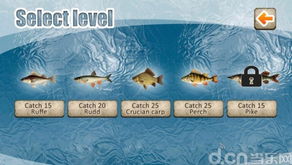How to Cultivate and Fish with Crickets: A Comprehensive Guide with Illustrations
Crickets have long been a popular choice for anglers looking for an effective and eco-friendly way to fish. These small, noisy insects are not only a delightful addition to any garden, but they also serve as an excellent bait for various fish species. In this comprehensive guide, we will delve into the art of cultivating crickets and share some expert fishing techniques, complete with detailed illustrations to help you master this unique method of angling.
Section 1: Cultivating Crickets
1 Choosing the Right Species
Not all crickets are created equal when it comes to fishing. The most popular species for anglers include the American cricket (Acheta domesticus), the field cricket (Gryllus assimilis), and the mole cricket (Gryllotalpa spp.). The American cricket is particularly favored due to its size, availability, and the fact that it is a nocturnal insect, making it a perfect match for fishing at night.
2 Setting Up a Cricket Habitat
To cultivate crickets, you'll need a suitable habitat that mimics their natural environment. Here's how to set up an effective cricket farm:
- Container Selection: Use a sturdy container, such as a plastic bin or a terrarium, with good ventilation and a tight-fitting lid.
- Substrate: Line the bottom of the container with a layer of moist soil or peat moss. This will provide the crickets with a place to burrow and hide.
- Lighting: Crickets are nocturnal, so ensure your habitat has a dark environment. You can use a light timer to simulate night and day cycles.
- Food and Water: Provide a small dish of water for drinking and a food source like stale bread, fruit, or vegetable scraps.
3 Maintaining the Cricket Habitat

Proper maintenance is crucial for a healthy cricket population:
- Temperature: Keep the habitat temperature between 70-80°F (21-27°C) to ensure the crickets remain active.
- Humidity: Maintain a humidity level of around 70-80% to prevent the crickets from drying out.
- Feeding: Feed the crickets regularly but avoid overfeeding, as this can lead to a build-up of waste and attract pests.
- Cleaning: Clean the habitat regularly to remove waste and prevent mold growth.
Section 2: Fishing with Crickets
1 Choosing the Right Gear
When fishing with crickets, the right equipment can make all the difference:
- Rod and Reel: A lightweight spinning rod and reel are ideal for crickets.
- Line: Use a monofilament line with a diameter of 4-6 pounds.
- Hook: A small, sharp hook, such as a size 8 or 10, is sufficient for crickets.
- Bait: Simply attach a cricket to the hook using a bait holder or a piece of thread.
2 Choosing the Right Location
Crickets are found in a variety of habitats, including grasslands, forests, and gardens. To find the best fishing spots:
- Season: Crickets are most active during warm weather, so fish during the summer months.
- Time of Day: Fish at night or early morning when crickets are most active.
- Water Source: Look for areas near water sources, such as streams, ponds, or marshes.
3 Fishing Techniques
Here are some effective techniques for fishing with crickets:
- Drop Shot: Drop a cricket down to the bottom of the water and let it sit. Gently twitch the line to mimic the movement of a struggling insect.
- Casting: Cast your line out and allow the cricket to sink to the bottom. Then, retrieve it at a slow, steady pace.
- Still Fishing: Simply place a cricket on the hook and let it sit on the bottom. This method works well in areas with a lot of aquatic vegetation.
Section 3: Illustrations
To help you visualize the process, we've included detailed illustrations for each step of cultivating crickets and fishing with them. These illustrations will guide you through setting up your cricket habitat, choosing the right gear, and mastering various fishing techniques.
Conclusion
Cultivating and fishing with crickets can be a rewarding and enjoyable experience. By following this comprehensive guide, you'll be well on your way to becoming an expert in this unique method of angling. Remember to always practice sustainable fishing techniques and respect the natural environment. Happy fishing!












